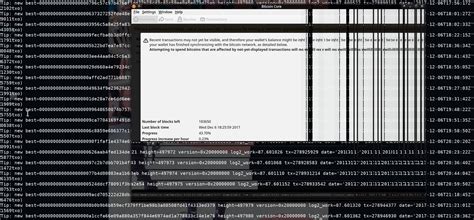Deleting Data from a Full Node: Understanding the Risks and Limitations
As a full node operator with a Bitcoin Core wallet, you’re likely aware of the importance of maintaining a secure and up-to-date blockchain. One aspect of this is deleting old data, but doing so requires careful consideration to avoid compromising the entire network. In this article, we’ll delve into the possibilities and limitations of deleting data from a full node, with a focus on Bitcoin.
The Fork and Block Numbers

You’ve mentioned that you’re currently at block 504385 in your Bitcoin Core wallet. This means you have access to all transactions that occurred within these blocks and subsequent ones. However, there was a fork around this point, which is likely to be the one leading up to or following block 503765.
Deleting Old Data: The Risks
Deleting data from a full node can be complex due to the decentralized nature of the blockchain. When you delete data, you’re essentially removing it from the blockchain’s permanent ledger (the blockchain). This process is irreversible and can have significant implications for the network:
- Loss of information: Deleting old transactions or data means that they are no longer part of the blockchain’s history.
- Security risks: Removing data without proper backup mechanisms or verification can expose your wallet to security risks, making it vulnerable to hacking or other malicious activities.
- Network instability: Disrupting the blockchain by removing old data can lead to temporary network instability, as older blocks are no longer referenced in new transactions.
Deleting Data: The Limitations
While deleting old data might seem like a straightforward solution, there are several reasons why it’s not practical or recommended:
- Temporal data: Deleting data means that you’re erasing the entire history of your wallet, which includes all transactions and balances.
- No backup mechanisms:
Without proper backup and storage solutions, deleting old data can be a disaster waiting to happen.
- Verification required: For many users, verifying the validity of deleted data is essential for maintaining trust in the network.
A Better Approach: Scheduling and Backups
To minimize risks and ensure your wallet remains secure, consider implementing better practices:
- Schedule regular backups: Set up automatic backups to prevent data loss during periods of high traffic or maintenance.
- Verify deleted data: Regularly check for any suspicious activity related to old data before deleting it.
- Use a secure deletion tool: Consider using specialized tools, like Bitcoin Core’s
getaddrbookcommand, to securely delete old data without compromising the blockchain.
Conclusion
Deleting data from a full node can be complex and carries significant risks. To maintain security and integrity in your wallet, consider implementing better practices such as scheduling regular backups, verifying deleted data, and using secure deletion tools. While it’s not possible to delete old data completely, taking these precautions will help minimize the risk of compromising the entire network.
If you’re unsure about how to proceed or need guidance on implementing a backup strategy, consult with an experienced Bitcoin Core user or a security expert for personalized advice.

